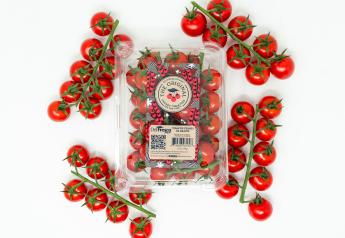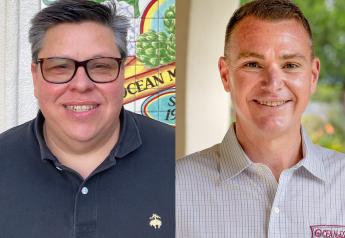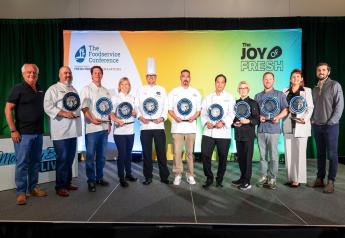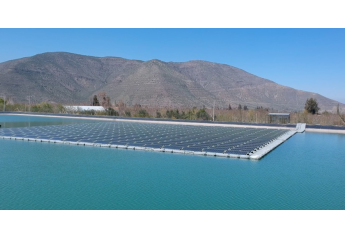San Francisco produce markets continue improvements

Carolyn Lasar (left) and Janna Cordeiro process items for the San Francisco Wholesale Produce Market’s food recovery program. Market representatives go from business to business to recover as much food as possible each day, says Michael Janis, general manager.
The San Francisco Wholesale Produce Market is in the early stages of its latest expansion program and has launched an innovative food recovery program, while the Golden Gate Produce Terminal in South San Francisco has begun producing electricity through its new solar energy project and has completed some renovations.
The San Francisco Wholesale Produce Market, which was built on just over 25 acres of city-owned land in 1963, signed a new 60-year ground lease in 2013 that included three additional acres and a multi-year $100 million reinvestment plan to ensure the future of the market and its infrastructure, said Michael Janis, general manager.
In 2015, the added acreage became home to an 82,000-square-foot Leadership in Energy and Environmental Design-certified building that houses a distribution center for Mill Valley, Calif.-based Mollie Stone’s Markets, an independent retail chain, and a younger company called Good Eggs, which combines technology, food and distribution, Janis said.
The combination of the old and the new is an example of how the market continues to evolve, he said.
“They’re distributing food, but in different ways,” he said.
With 32 tenants, the market is at full capacity, and thriving businesses continue to be challenged by space constraints, he said.
Janis attributes the strength of the market to a “strong infrastructure of governance” consisting of the board of directors made up of merchants and a number of volunteers who “bring expertise, perspective and experience to the table.”
“It’s something that has evolved very strongly over the last four years,” he said.
In May, the board greenlighted its real estate development committee’s recommendation for the market’s next major improvement — another building.
“Planning has begun on that,” Janis said.
The market also is engaged in community work, such as its food recovery program.
All markets have relationships with food banks, but the San Francisco market has taken that concept to the next level, he said.
The market has designated an employee whose sole function is to go from business to business to recover as much food as possible, Janis said.
Golden Gate solar
Meanwhile, a solar project launched two years ago at the Golden Gate Produce Terminal has begun producing electricity.
In mid-September, the $3.8 million project was 95% complete, said Steve Hurwitz, an owner and president of Bay Area Herbs and Specialties LLC and a member of the board of directors who worked with others on the board to help bring the project to fruition.
“We’re actually producing electricity right now,” he said.
It will produce more than 2 million kilowatts of energy annually, which is the equivalent of removing emissions from about 300 cars from the road and enough to provide electricity to 209 homes, he said.
It will save 1.5 million pounds of coal from being burned, he added.
The project will fill virtually all the energy needs of the tenants on the market and provide charging stations for electric trucks and vehicles in the future, Hurwitz said.
He called the project a “success from the tenants’ and landlord perspective.”
The project means a tax credit plus a depreciation allowance for shareholders and lower energy bills for tenants, added Pete Carcione, president of Carcione’s Fresh Produce Co. Inc. on the market and president of the market’s board of directors.
“We’ve got to keep our tenants happy and keep them here,” he said. “If we can help them with a break on their energy bills, I think that’s a good way to go.”
Carcione said he believes some buyers who strayed from the market over the years are starting to come back.
“They want to look at what they’re buying before they buy it,” he said.
Customers are realizing the benefit of buying fresh daily and enjoying the market’s new infrastructure that includes more covered parking, improved traffic flow and better signage, Hurwitz added.







